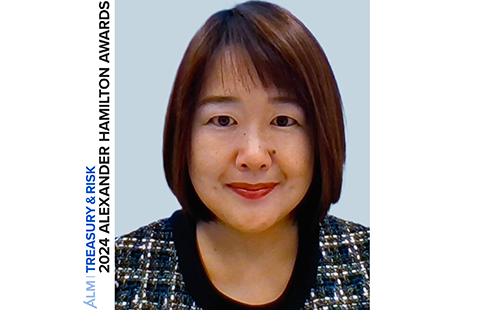
Amway sells consumer products in more than 100 countries and territories, and until recently its accounts payable (A/P) processes were highly decentralized. The finance function was making progress in consolidating global workflows, but payments continued to be handled in the business units. In total, divisions around the world used more than 100 different banks. They processed payments with different technologies, controls, and approval processes.
“Each country had its own individual finance team, with its own way of doing things,” explains Jeff May, former supervisor for global treasury at Amway. “That put us in a difficult position as far as visibility to cash flows. Corporate treasury relied on the business units to provide information about their payments by filling out a spreadsheet and emailing it to us once a month. If someone was out sick, we might not get the data—and when we did get the data, it didn't always match what we saw in the general ledger [G/L].”
The treasury team set out to implement a standardized global payments process and payment hub technology with straight-through connectivity to the company's banks. They also wanted to support the replacement of an outdated mainframe-based G/L system that had been built in-house years earlier. Finally, they aimed to rationalize the large number of banks Amway worked with.
The project represented a massive overhaul of payments across a large and diverse business. “At first, it was challenging to get the entire world on board with our ideas,” May admits. “We collaborated with a global change management team that was working with Amway divisions around the world on the transition to a new ERP [enterprise resource planning] system. We joined their change management efforts, including participating in training sessions to explain what we were wanting to do.”
 As the company deployed the new ERP system, treasury rolled out a Kyriba treasury management system and undertook a bank rationalization project that ultimately reduced the company's payment banks by about 50 percent. “Initially, there was hesitation from internal business partners on reconsidering our payment banks. They would say, 'We need to keep all our banks for X, Y, and Z reasons,'” May says. “Of course, there are countries that require unique treatment for regulatory reasons. We worked hard to understand those and determine where we really couldn't standardize. But as we explained to business groups how we were going to handle payments going forward, it became clear that the processes would be much more efficient if we rationalized our banks. The banks we retained were those that could slot into the new workflow.”
As the company deployed the new ERP system, treasury rolled out a Kyriba treasury management system and undertook a bank rationalization project that ultimately reduced the company's payment banks by about 50 percent. “Initially, there was hesitation from internal business partners on reconsidering our payment banks. They would say, 'We need to keep all our banks for X, Y, and Z reasons,'” May says. “Of course, there are countries that require unique treatment for regulatory reasons. We worked hard to understand those and determine where we really couldn't standardize. But as we explained to business groups how we were going to handle payments going forward, it became clear that the processes would be much more efficient if we rationalized our banks. The banks we retained were those that could slot into the new workflow.”
When the treasury management and ERP system rollouts had proven successful, Amway began routing all payments, in every business unit around the world, through one of four regional finance shared service centers. Now business units initiate payments and business managers approve those payments within the ERP system. After a payment has all the right approvals in place, it is added to the ERP system's payment file.
The ERP system automatically sends payment files to each regional shared service center's payment hub. There, the Kyriba payment module determines the appropriate format for each bank's payment file and the bank's preferred method of connectivity, whether a host-to-host connection with the bank portal or a SWIFT transmission. The payment files are reviewed and released, and the payment hub automatically transmits the file to the bank.
After a bank receives a payment file, it automatically sends back a payment acknowledgement in the form of an ACK or NACK message. The acknowledgements flow into a dashboard that shared service center staff can use to understand in real time which payments were processed successfully. Likewise, prior-day bank statements flow straight through into the treasury management system on a daily basis. The ERP system's cash management module automatically reconciles the bank statements with ERP payment data and alerts shared service center staff to any exceptions.
“This new process is very streamlined,” says May. “Like always, there are exceptions. In certain countries, local requirements mandate that specific payments go through processes that are not our standard workflow. But for the vast majority of our payments around the world, we've eliminated a lot of unnecessary steps that used to waste time and cause payment delays in our legacy environment.”
See also:
- On-demand webcast: How to Leverage Payment Innovations and Efficiencies
- Custom-Built Software Streamlines Currency-Controls Compliance
- Improving Efficiency of Global Travel Sourcing
- 2019 Alexander Hamilton Awards in Technology Excellence
May estimates that the company is saving more than 600 hours a month that staff would have spent on manual payment-related activities and managing spreadsheets in the prior environment. “When you're operating in more than 100 different countries and you consolidate and eliminate manual activities across all of those, staff have a lot more time to work on strategic initiatives,” he says. “We've also found that this change has boosted morale because maintaining our cash flows doesn't require so much tedious busy work.”
The standardized controls and enhanced visibility into payments have significantly reduced the chance that Amway will fall victim to payments fraud. And the centralized understanding of cash flows enables the treasury team to make better use of funds and reduce working capital globally. “Previously, we could only see point-in-time and end-of-month balances,” May says. “We couldn't see the day-to-day ups and downs of our global cash position. So we really didn't have a good sense of how to fund those cash flows. Now the payments dashboard gives us that visibility. Our cash forecasts are much better. We can be sure we have the desired amount in each account, and the rest can be swept into our regional cash pools.”
May attributes the project's success to the continued, enthusiastic support of senior management, and to the persistence of the treasury team. To bring an initiative like this to fruition, he says, “you have to make sure you stick to the standardization process. In some countries, you will get pushback. We encountered many situations where people initially believed that they had to continue doing things the way they had always been done. There were numerous occasions where we could have been talked into making exceptions even though exceptions really weren't necessary. But we stayed focused on our vision, we kept talking to and listening to our business partners, and we kept asking 'Why?' Through this effort, we were able to standardize processes across most of our global businesses.”
© 2025 ALM Global, LLC, All Rights Reserved. Request academic re-use from www.copyright.com. All other uses, submit a request to [email protected]. For more information visit Asset & Logo Licensing.




